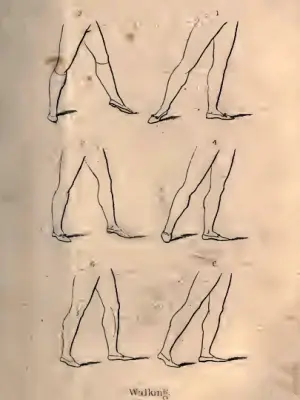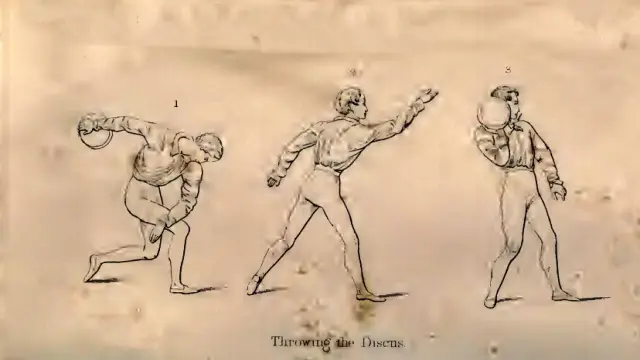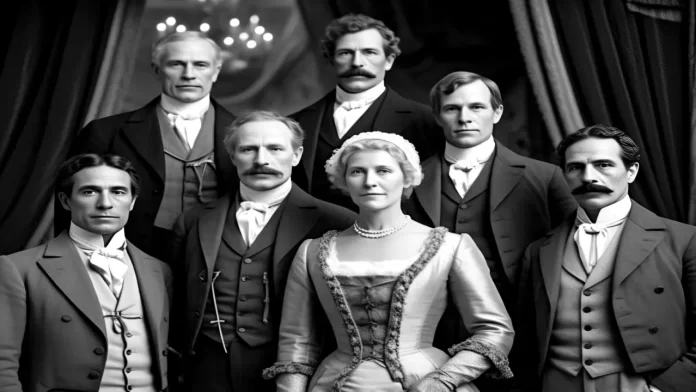How to Train Like a 19th-Century Pedestrian: The Ultimate Guide to Strength and Endurance!
If you’ve ever wondered how athletes trained in the 1800s, look no further than pedestrianism, an early form of race-walking that captivated audiences across Britain. Famous figures like Captain Barclay – The Celebrated Pedestrian and Thomas Topham – the British Samson achieved incredible feats of endurance using strict training regimens. These methods may seem unusual today, but they were highly effective for their time. Let’s explore how you can emulate these legends by following their unique approach to strength and stamina.
What Is Pedestrianism?
Before diving into the training plan, it’s important to understand what pedestrianism was. Popular in the 18th and 19th centuries, pedestrianism involved long-distance walking competitions that drew massive crowds. Events often featured wagers, with participants betting large sums of money on their ability to complete grueling challenges. One of the most famous examples is Captain Barclay’s 1,000-mile walk in 1,000 consecutive hours, which earned him both fame and fortune.

These events weren’t just about physical prowess—they also showcased discipline, mental toughness, and strategic preparation. So, if you’re ready to step back in time and train like a Victorian athlete, here’s how to get started.
Step 1: Purging the Body
The first step in this historic training method involves purging the body using Glauber’s salt, a popular laxative named after German apothecary Johann Glauber. According to Donald Walker’s book Manly Exercises (1860), aspiring pedestrians should take one and a half to two ounces of Glauber’s salt three times, with four days between doses.
This process cleanses the system and prepares the body for intense physical activity. While modern medicine might frown upon such drastic measures, Victorians believed this was essential for peak performance. Once purged, the real training begins.
Step 2: Daily Training Routine

After purging, the athlete follows a rigorous daily schedule designed to build endurance and strength. Here’s a breakdown:
- Morning Exercise: Wake up at 5 a.m. and run half a mile uphill at top speed. Follow this with a six-mile walk at a moderate pace.
- Breakfast: Enjoy beefsteaks or underdone mutton chops paired with stale bread and old beer. This high-protein meal fuels the body for the day ahead.
- Mid-Morning Walk: Complete another six-mile walk at a moderate pace.
- Noon Rest: Lie in bed without clothes for 30 minutes to allow the body to recover.
- Afternoon Walk: Take a four-mile walk at a moderate pace.
- Dinner: Eat more beefsteaks or mutton chops with bread and beer. After dinner, sprint half a mile and walk six additional miles.
- Evening Rest: Retire to bed by 8 p.m., ensuring plenty of rest before repeating the routine the next day.
This demanding schedule continues for three to four weeks, building both physical endurance and mental resilience.
Step 3: The Sweating Regimen
After the initial training period, the athlete moves on to the sweating regimen, a key part of the process. Instead of the pre-breakfast exercise, the pedestrian runs four miles at top speed while wearing flannel clothing. Upon returning home, they drink a pint of hot sweating liquor, made by boiling caraway, liquorice root, coriander, sugar-candy, and cider until the volume is reduced by half.
Next, the athlete is placed in a feather bed still wearing the flannels and covered with six to eight blankets. After 30 minutes, they are rubbed dry, dressed in a great coat, and take a quiet two-mile walk. Breakfast now consists of a whole roasted chicken.

The sweating regimen is repeated once a week for three to four weeks. During downtime, athletes are encouraged to play sports like cricket, bowls, golf, or quoits to maintain overall fitness.
The Diet of Champions
Victorian athletes relied heavily on a diet rich in meat, bread, and beer. Walker specifies that beef or mutton is preferred, roasted or broiled rare, with minimal seasoning. Vegetables are limited to bread or biscuits, and seasonings are strictly prohibited. Fluid intake includes cold home-brewed beer or red wine, consumed only to quench thirst.
For example, Captain Barclay’s diet during his 1,000-mile challenge included:
- A roasted fowl for breakfast, along with strong ale, tea, bread, and butter.
- Beefsteaks or mutton chops for lunch.
- Roast beef or mutton chops for dinner, accompanied by porter and wine.
- Cold fowl for supper.
He reportedly ate five to six pounds of animal food daily, along with seasonal vegetables. This calorie-dense diet provided the energy needed for prolonged exertion.
Why Beef, Bread, and Beer?
The emphasis on beef, bread, and beer reflects the nutritional knowledge of the time. Meat supplied protein for muscle repair, bread offered carbohydrates for energy, and beer provided hydration and calories. While we now know that balanced diets include fruits, vegetables, and varied nutrients, this approach worked well for Victorian athletes who required sustained energy for long walks.
Famous Feats of Pedestrianism
One of the most remarkable achievements in pedestrianism was Captain Barclay’s 1,000-mile walk in 1,000 consecutive hours. To accomplish this, he walked one mile every hour for 42 days straight, earning a wager of 1,000 guineas. His success wasn’t just due to raw talent—it stemmed from meticulous planning, disciplined training, and unwavering determination.
Another legendary figure is Thomas Topham, known as the British Samson. Topham gained fame for his incredible strength, including lifting heavy weights and performing extraordinary physical feats. Both men exemplified the ideals of athleticism during their era.
Lessons for Modern Fitness Enthusiasts
While few people today would attempt to replicate the extreme routines of Victorian pedestrians, there are valuable lessons to be learned:
- Consistency matters: Training daily builds endurance over time.
- Nutrition is crucial: Fuel your body with foods that support your goals.
- Rest and recovery: Incorporate periods of rest to prevent burnout.
- Mental toughness: Push through discomfort to achieve greatness.
Though modern science has refined our understanding of fitness, the principles behind pedestrianism remain relevant. Whether you’re training for a marathon or simply aiming to improve your health, adopting some aspects of this historic regimen could yield surprising results.
Final Thoughts: Embrace the Spirit of Pedestrianism
Training like a 19th-century pedestrian might not appeal to everyone, but it offers a fascinating glimpse into the past. From purging the body with Glauber’s salt to consuming hearty meals of beef, bread, and beer, these methods highlight the dedication required to excel in endurance sports.
So, why not channel your inner Captain Barclay or Thomas Topham? With a mix of discipline, determination, and perhaps a little creativity, you too can embrace the spirit of pedestrianism and achieve your fitness goals. Who knows—you might even inspire others to join you on this journey!
Bold, unconventional, and undeniably effective—pedestrianism proves that sometimes, the old ways are still the best.

